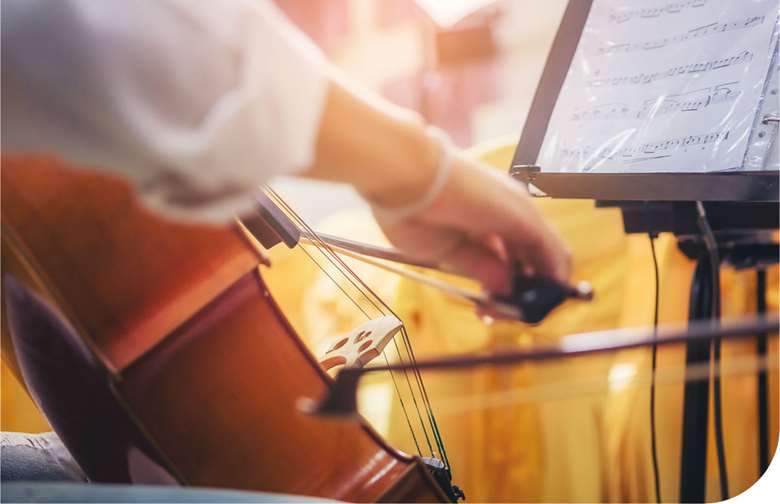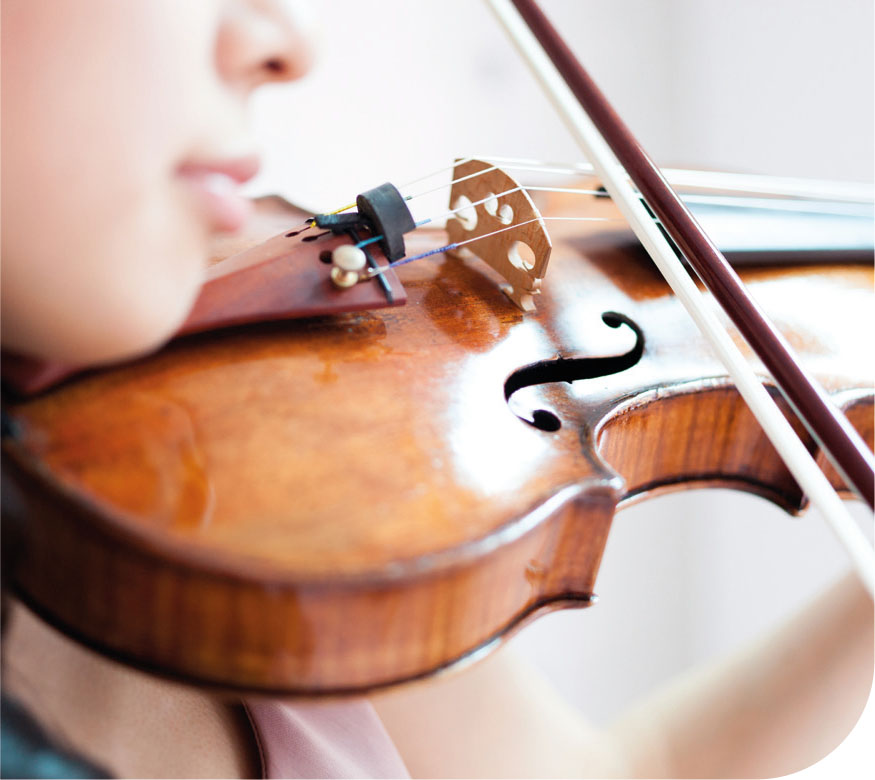Practice makes better: The strings practice toolbox
Vanessa Gaidoni
Friday, October 1, 2021
Are you looking for fun, creative ways to encourage your strings students to practise at home? Vanessa Gaidoni shares some fresh ideas for you, your students, and their parents or guardians.

Adobe Stock/ Panama
Waving off a pupil at the end of a lesson can feel a little like leaving your house plants when you go away on holiday. They are fully watered, but will they be happy and thriving, or a little wilted on your return? Some pupils will have a helpful relative pop in dutifully and tend to their every need; others are very much on their own. As teachers, it is our job to ensure that these pupils have everything they need to convert our creative input into a productive week of practice.
Adapt your approach
Our pupils become the teacher when we are not there. It can help to explain this to them and ask what kind of teacher they would like to be – will they be kind, enthusiastic and encouraging, or lazy and irritable? Children spend more time teaching themselves during the week than we do in their lesson.
Getting to know each individual child is crucial; for me, the seemingly inconsequential chat at the beginning of the lesson is the key to everything. They assume I am just being friendly, when what I am actually doing is mining them for information on what excites, motivates and interests them. Every child is different, and I use my findings to deliver the information I want them to digest, with a big dollop of what they already love on top.
I like to explain to the younger ones that practice is like climbing up the steps of a slide in the playground. Each day they climb a step and then we get to whoosh down the slide together in the lesson. The higher they climb, the bigger the whoosh and the more new things we get to explore together. At every level I always start the lesson with, ‘What went well this week?’ It is a positive start for them to feed back their triumphs, which I follow up with, ‘What can I help you with?’. This encourages them to come each week with an idea of what they would like to achieve and starts the important process of them actively engaging in their own learning.
 © Adobe Stock/ Blanche
© Adobe Stock/ Blanche
If you spoon-feed pupils during lessons, they won't develop the skills needed to ‘teach’ themselves at home. Pupils need to leave each lesson with a clear plan for the week ahead. Make it as entertaining as possible to remind them of what you have done together. The more memorable the lesson, the easier it will be for them to remember what to do. Don't be afraid to be silly or outlandish and make them laugh.
Teacher's toolbox
Here are a few ideas that I have found helpful to encourage practice during the week:
- Place coloured tabs on bars that need practice; pupils peel them off one by one over the week as they have perfected them.
- Make a ‘Practice vs Performing’ flag or sign for them to flip to show their intention before playing. Older pupils could stand in a different part of the room when they ‘perform’.
- ‘Emotional’ scales have proved very popular! I bought emoji stickers and we've explored playing scales with different emotions. These stickers can also be stuck on the music to show where pieces go into the minor or change mood.
- Stick colourful washi tape on the bow or under the strings as a bow ‘landing strip’.
- Give them an empty shopping list to write a list of questions, or bars in need of help, to ‘shop’ for in the next lesson.
- Copy their music and encourage them to hunt for links such as patterns, dynamics or articulation. Colour generously with highlighter pens to help them discover and map the structure of the music.
- Make a keyring or lucky dip with flash cards for this week's scales.
- Copy their music and actively encourage them to cut it up into bars or phrases. As they learn each section, they can piece it together like a musical jigsaw.
- Get the pupil to slide tiddlywinks or smarties from one side of the music stand to the other each time they play a section correctly. If they make a mistake, then the counters all have to return to the start.
- Some older pupils enjoy writing a practice journal.
- Find stories in the music – these can be written out during the week. If pupils are artistic, they could draw pictures on their music or on a separate blank sheet.
- Suggest sending a musical postcard to family, friends, or teachers during the week by recording themselves, or try a ‘before and after’ practice video.
- Make a YouTube playlist for each pupil; add pieces discussed in lessons so they can easily find them during the week to listen at home.
- If a passage is going well, encourage them to think of ways to make it harder (such as having their eyes closed or playing faster than required) or play it in the opposite way: fast/slow, loud/soft, staccato/legato.
- Try a game of ‘pin the tail on the donkey’ – with eyes closed, place a sticky tab mid-way through the piece and start there, this is to discourage always starting at the beginning.
This is by no means an exhaustive list, and I don't use them all with every pupil. It is really important to be flexible and do what works best for each individual child; there is no one-size-fits-all.
Practice will naturally ebb and flow for so many reasons, but it is important to find a routine and style that works for each of them. I encourage my pupils to message me between lessons if they get stuck or things aren't going well. I know this isn't for every teacher, but I do find it can help to keep up the practice momentum.
Chat with parents if you feel they aren't involved in practice. Often it isn't that they don't want to – they just have no idea where to start. Giving them a few ideas might be all they need.
Practice partner's toolbox
Here are a few things that I have found helpful to explain to non-musical parents:
- Find a regular time; mornings are best as you often already have more of a regular routine. It only needs to be 10 minutes to start with. The routine is more important than the duration.
- Find a calm environment – make sure other family members aren't doing fun activities that the practising child feels they are missing out on.
- Be enthusiastic! Even if they are making weird scrapes and scratches, a string instrument is challenging. Praise the effort rather than the result.
- Encourage mini concerts for anyone who will listen. Younger children are often happy with a concert for their teddies.
- Listen to music together, maybe at mealtimes or in the car. Try a playlist of film music and see who can guess the film first.
- Consider topping and tailing the practice. You can get them started and then come back at the end for a little performance or to spot things that have improved.
- There is a direct link between practice and progress. If the practice isn't done at home, it is done in the lesson. This is expensive practice that could be done at home for free!
Pupil's toolbox
Giving pupils the tools to work independently during the week is all-important, especially if they have minimal support at home. Teachers can explain how to break up their available time into sections. Here is an example:
- Listen carefully!
- View mistakes as information, rather than wrong, and experiment until you discover a better solution.
- Look for patterns and repeated bars – ‘buy one, get one free’.
- Separate practising and performing mindsets.
- Break everything down and gradually piece back together.
- Don't always start at the beginning of a piece.
- Concentrate on one area of your playing at a time and grant everything else an advance pardon.
- If you aren't sure what to work on, pick something from the ‘practice ideas checklist’: tempo, notes, rhythm, bowing, articulation, shifting, vibrato, dynamics, intonation (tuning), bow control, sound quality, tension/relaxation, balance, posture, phrasing, structure, memory, focus/concentration, musical meaning and direction, stylistic concerns, fluency.
I see every pupil that walks into my studio as a fascinating, unique puzzle; it is my job to find all the interlocking pieces. Follow your gut, have fun and if something doesn't work, try something else!
Violin Tips Practice Guide
If you're looking for something more, the Violin Tips Practice Guide is a new free tool that can help improve independent practice in strings students. It features:
- A three-point method based on word commands and memorisation.
- A comprehensive guide with over 200 tips.
- A video tutorial with over 40 scales and example exercises.
Full review to follow. www.violin-tips.com

